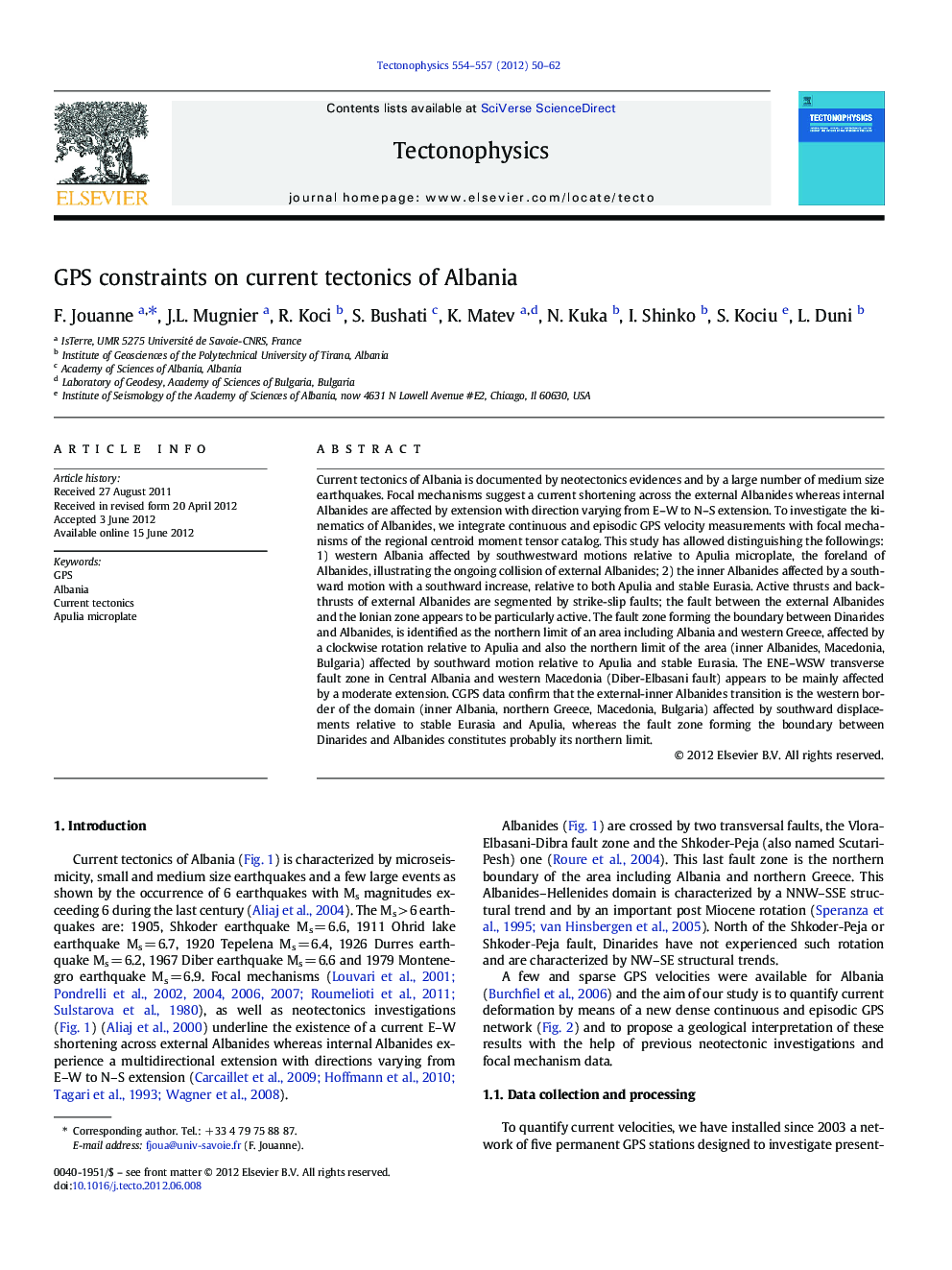| Article ID | Journal | Published Year | Pages | File Type |
|---|---|---|---|---|
| 6434220 | Tectonophysics | 2012 | 13 Pages |
Current tectonics of Albania is documented by neotectonics evidences and by a large number of medium size earthquakes. Focal mechanisms suggest a current shortening across the external Albanides whereas internal Albanides are affected by extension with direction varying from E-W to N-S extension. To investigate the kinematics of Albanides, we integrate continuous and episodic GPS velocity measurements with focal mechanisms of the regional centroid moment tensor catalog. This study has allowed distinguishing the followings: 1) western Albania affected by southwestward motions relative to Apulia microplate, the foreland of Albanides, illustrating the ongoing collision of external Albanides; 2) the inner Albanides affected by a southward motion with a southward increase, relative to both Apulia and stable Eurasia. Active thrusts and backthrusts of external Albanides are segmented by strike-slip faults; the fault between the external Albanides and the Ionian zone appears to be particularly active. The fault zone forming the boundary between Dinarides and Albanides, is identified as the northern limit of an area including Albania and western Greece, affected by a clockwise rotation relative to Apulia and also the northern limit of the area (inner Albanides, Macedonia, Bulgaria) affected by southward motion relative to Apulia and stable Eurasia. The ENE-WSW transverse fault zone in Central Albania and western Macedonia (Diber-Elbasani fault) appears to be mainly affected by a moderate extension. CGPS data confirm that the external-inner Albanides transition is the western border of the domain (inner Albania, northern Greece, Macedonia, Bulgaria) affected by southward displacements relative to stable Eurasia and Apulia, whereas the fault zone forming the boundary between Dinarides and Albanides constitutes probably its northern limit.
âºFirst quantification of current displacements with GPS and CGPS in Albania. âºExternal area characterized by ongoing shortening and strike-slip faults. âºInternal Albanides are affected by southward displacements/to Apulia and Eurasia. âºLocal gradients indicate N-S and E-W extension in internal Albanides.
